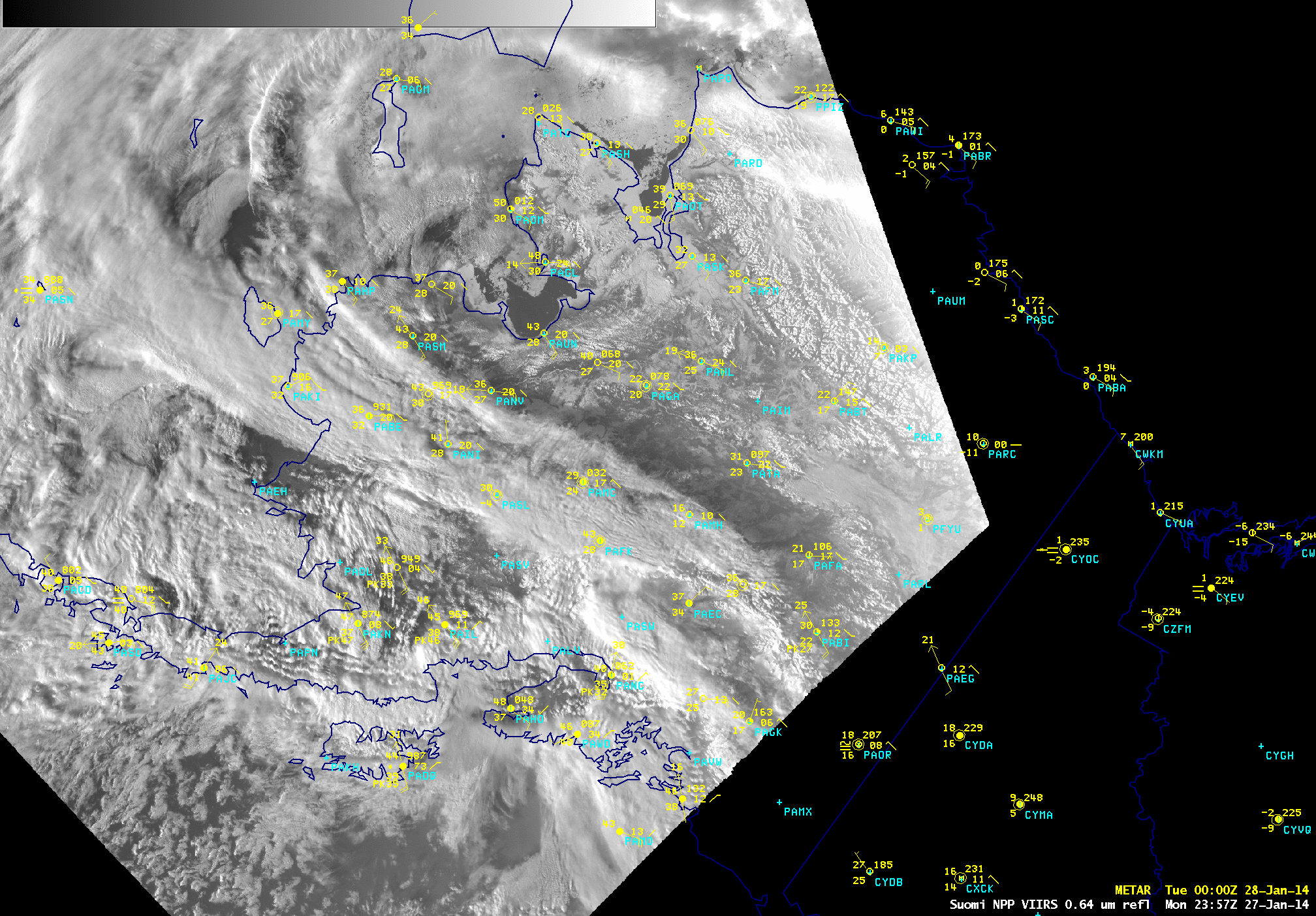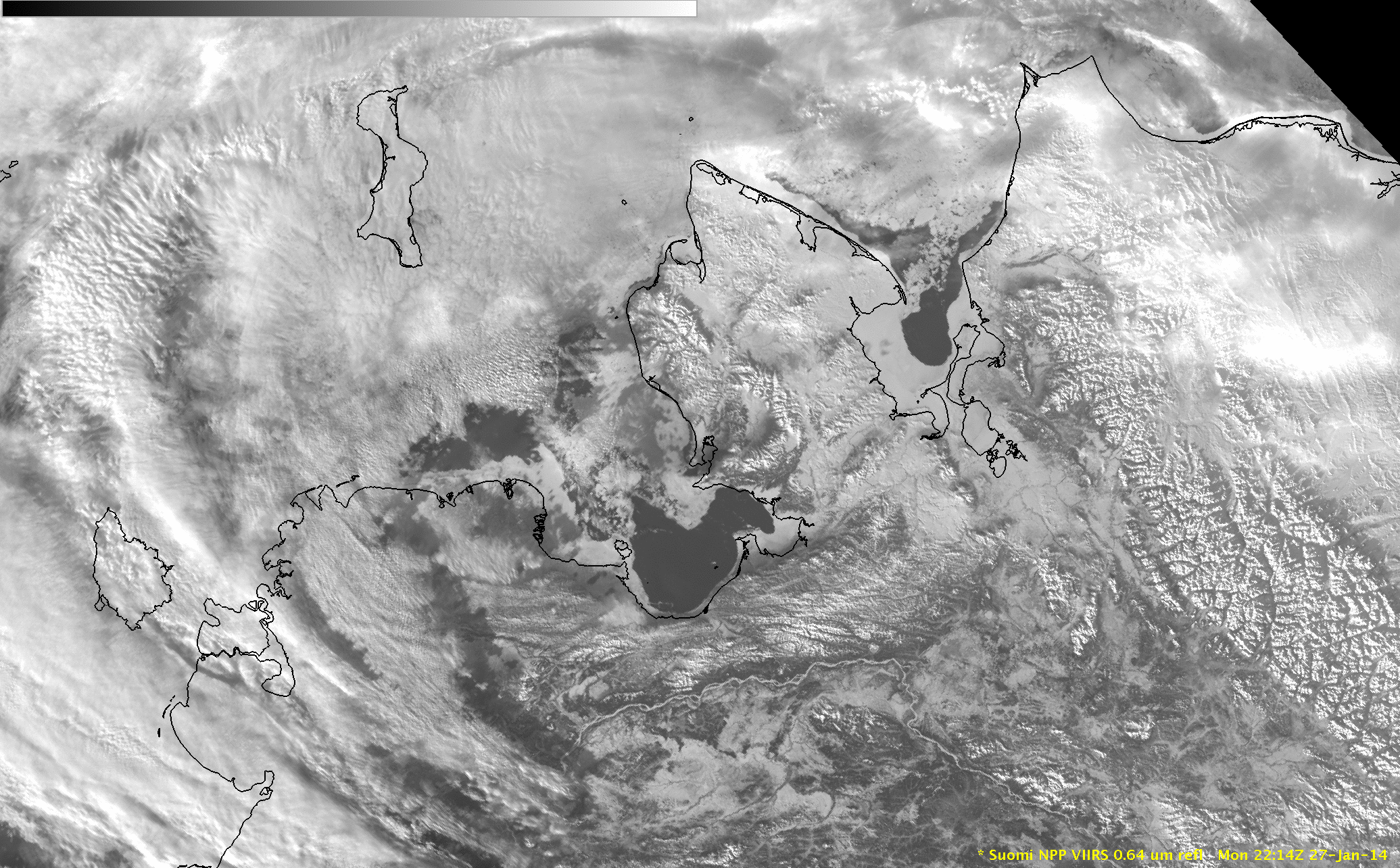Record high January temperatures in Alaska
A strong and persistent ridge of high pressure aloft (GOES water vapor image animation) along with a northward push of unusually warm air behind a poleward-moving frontal boundary (GOES IR image animation) helped some locations in Alaska set all-time record high temperatures for the month of January (including 51º F at Nome and 52º F at Denali National Park). An AWIPS I image comparison of 1-km resolution Suomi NPP VIIRS 0.64 µm visible channel data and the corresponding false-color Red/Green/Blue (RGB) product at 23:57 UTC on 27 January 2014 (above) showed generally cloud-free conitions over much of the northwestern quarter of Alaska — at that time Nome (station identifier PAOM) had a surface air temperature of 50º F, with offshore (east-northeasterly) winds. The Nome airport reported a snow depth of 12 inches on the morning of 27 January — however, there were several areas of bare ground (which appear as shades of cyan in the RGB image) scattered across the Seward Peninsula. Snow and ice appear as varying shades of red on the RGB image; supercooled water droplet clouds appear as shades of white, with ice crystal clouds taking on a pink to lighter red hue.
About an hour and a half earlier (22:14 UTC on 27 January), a closer look at the Seward Peninsula region using AWIPS II full-resolution (250 meter) Suomi NPP VIIRS visible and false-color RGB images (below) showed even more detail in terms of the location and size of the bare ground areas, with a few upwind of Nome (which was located approximately in the center of the images). Full sunshine and winds blowing across areas of snow-free ground likely helped to warm the air that was moving toward Nome. In addition to setting the all-time January high temperature of 51º F, the morning low that day of 38º F was also the warmest January minimum temperature on record for Nome.



